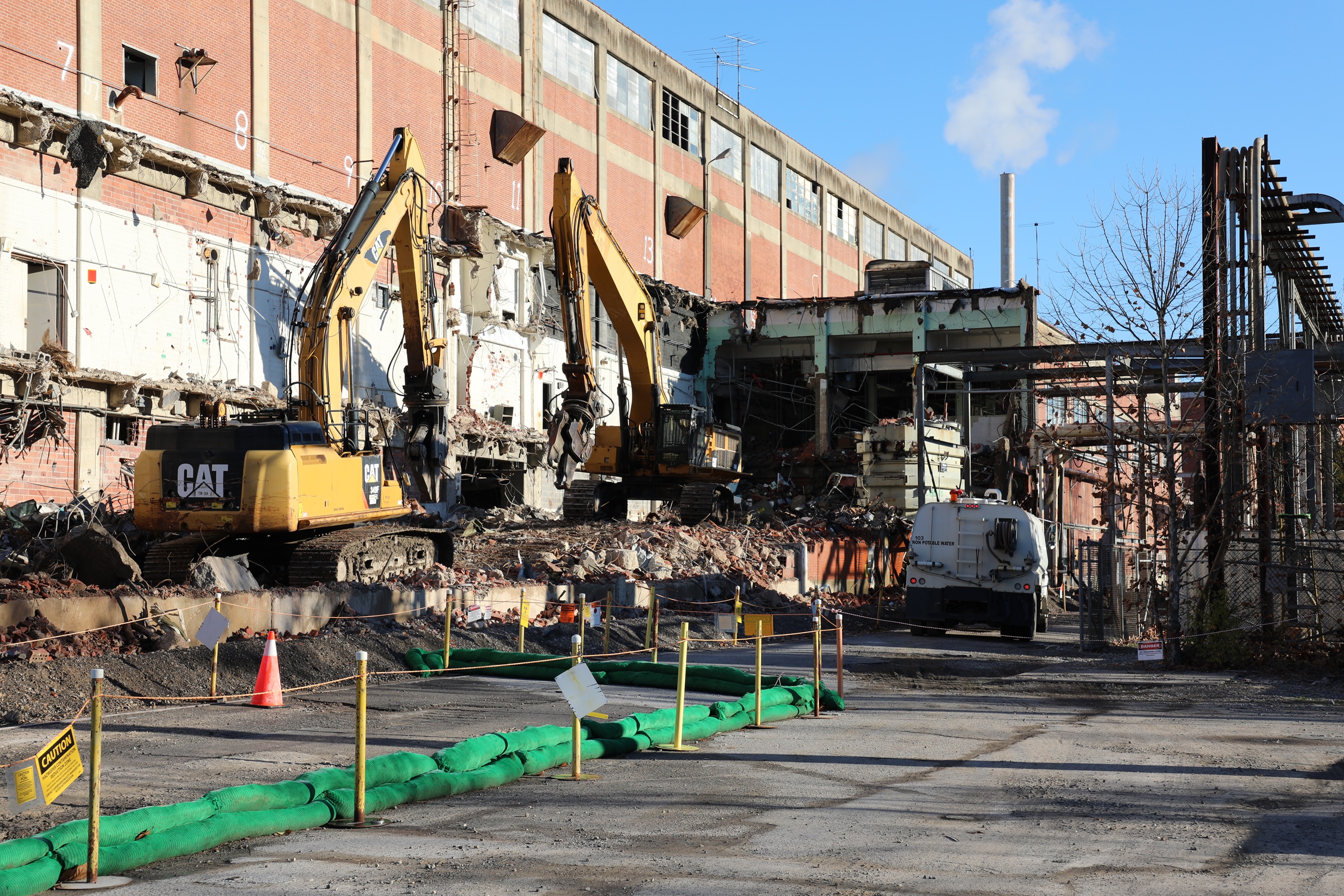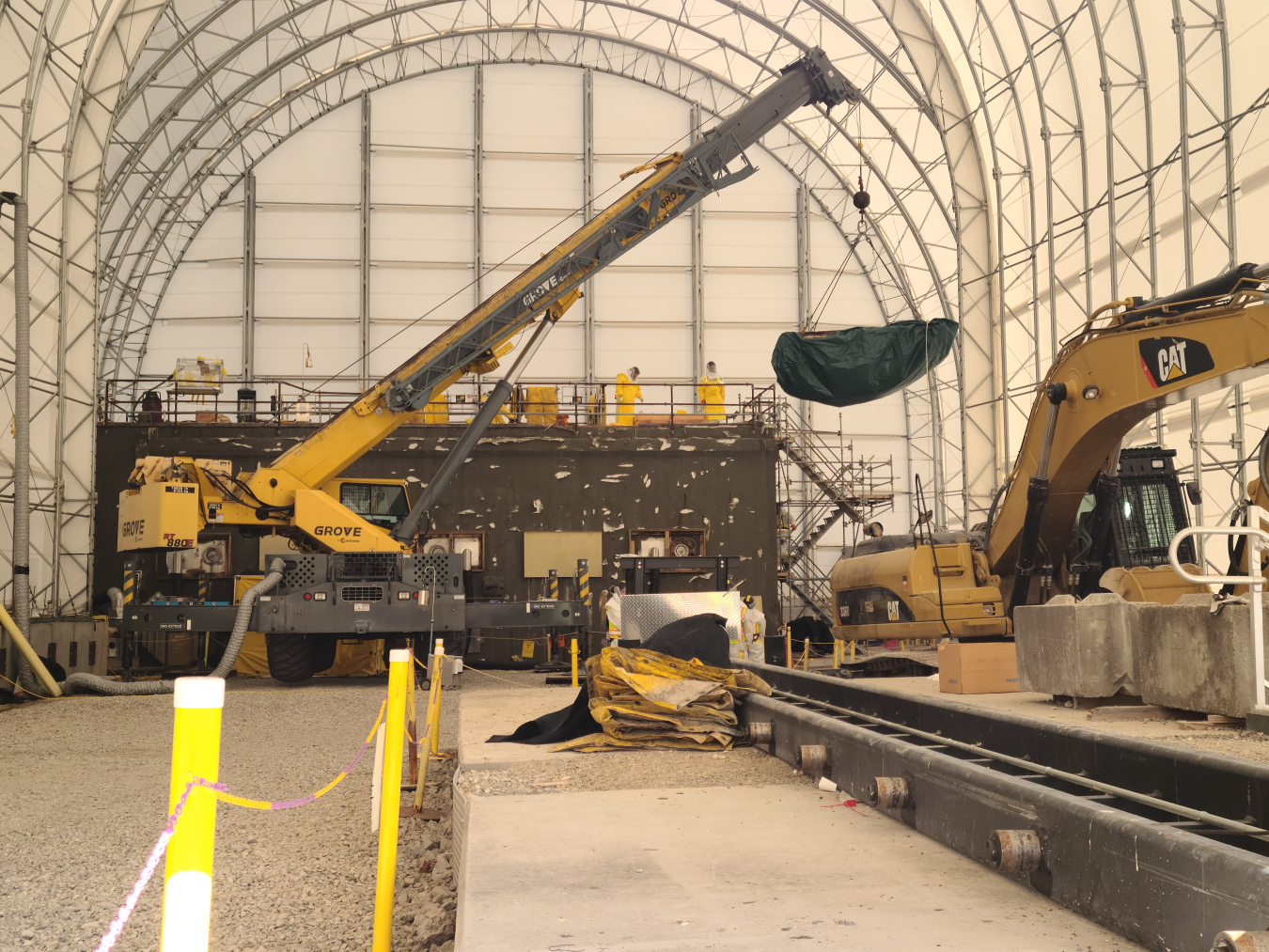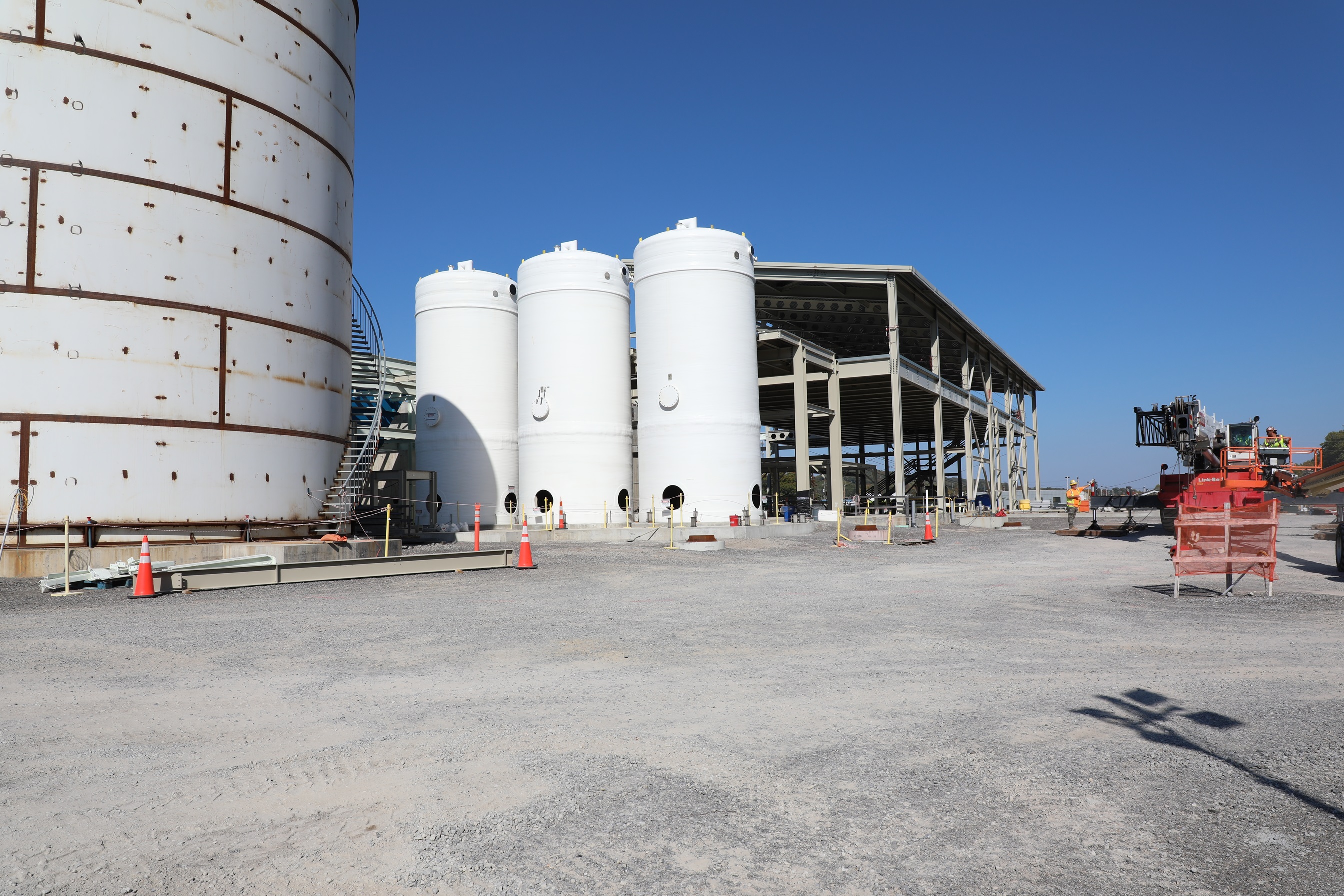The U.S. Department of Energy Oak Ridge Office of Environmental Management and its contractors are advancing the momentum achieved during a successful 2024.
Office of Environmental Management
January 7, 2025OAK RIDGE, Tenn. — The U.S. Department of Energy (DOE) Oak Ridge Office of Environmental Management (OREM) and its contractors are advancing the momentum achieved during a successful 2024.
This year, Oak Ridge projects on the docket will tear down high-risk structures, remove inventories of nuclear waste, prepare numerous buildings for demolition and open a new center to share the site’s history. Watch a video previewing OREM's year ahead here.

The Oak Ridge Office of Environmental Management and contractor UCOR will continue demolition on the massive three-story 325,000-sqaure-foot Alpha-2 building at the Y-12 National Security Complex in 2025. This is the largest demolition project to date at Y-12.
OREM will continue its focus on taking down excess contaminated facilities across the Oak Ridge Reservation, which eliminates risks and opens land for reuse to support research and national security missions.
In 2025, contractor UCOR will continue demolition on the massive three-story 325,000-sqaure-foot Alpha-2 building at the Y-12 National Security Complex. That project, which marks the first removal of a former enrichment building and the largest demolition to date at Y-12, clears away a high-risk excess contaminated structure.

Oak Ridge crews lift and remove heavy shielded plugs from the roof of a hot cell structure at the former Radioisotope Development Laboratory to conduct demolition preparation activities inside. The final hot cell, located under a six-story protective cover, is scheduled for demolition this year.
Teams will also demolish the final hot cell at the former Radioisotope Development Laboratory at Oak Ridge National Laboratory (ORNL) this year.
The contaminated cell, located in the heart of ORNL’s central campus, is a highly shielded concrete room that provided researchers protection from radioactive material as they conducted research. The laboratory was built in 1945 to support isotope separation and packaging, and was later used to examine irradiated reactor fuel experiments and components.
Workers will also advance efforts that are preparing more than a dozen facilities for future demolition. That list includes the Oak Ridge Research Reactor, Graphite Reactor support facilities, Isotope Row facilities at ORNL, and the massive Beta-1 former uranium enrichment building at Y-12.
Work is also moving forward on OREM’s highest priority at ORNL — eliminating the remaining inventory of uranium-233 stored onsite. Contractor Isotek processed more than 90 canisters of high-dose material last year and will continue pushing that effort forward as employees work to process and dispose of all that material.
The project will also continue providing medical isotopes to support next-generation cancer treatment research. A company receiving the isotopes is now producing at a commercial scale to supply clinical trials across the globe.
OREM is also steadily eliminating Oak Ridge’s inventory of transuranic waste stored onsite. To date, 94% of the site’s contact-handled debris waste and 78% of its remote-handled debris waste has been processed and shipped offsite for permanent disposal. Those shipments will continue to the DOE Office of Environmental Management’s Waste Isolation Pilot Plant over the next year.

Crews will continue advancing construction of the Mercury Treatment Facility at the Y-12 National Security Complex. Tasks involve installing structural steel at the facility’s treatment plant, pictured here.
In 2025, OREM will advance two critical infrastructure projects essential for future cleanup projects.
Progress will continue on the construction of the Mercury Treatment Facility at Y-12. Tasks involve pouring concrete at the headworks facility and installing structural steel at the treatment plant. When operational, this plant allows OREM to begin addressing Y-12’s large, mercury-contaminated facilities and sources of mercury in the soil, thereby protecting against releases into a nearby creek.
With field work completed on the second phase of the Environmental Management Disposal Facility (EMDF) late last year, OREM is now gathering data for its groundwater field demonstration study for the facility.
The study involves monitoring groundwater elevations over the course of the next two wet seasons through 2026. That data will inform the final design and enable the final phase of the project, which includes EMDF’s construction.
The K-25 Interpretive Center, located at the East Tennessee Technology Park, will open to the public this year. It will provide visitors of the Manhattan Project National Historical Park a sweeping, elevated, panoramic view of the K-25 building’s 44-acre footprint through 10-foot-tall wraparound glass windows.
OREM is also set to complete and open the new K-25 Interpretive Center this year. The facility will provide visitors of the Manhattan Project National Historical Park a sweeping, elevated, panoramic view of the K-25 Building’s 44-acre footprint through 10-foot-tall wraparound glass windows.
The public will be able to learn more about the former uranium enrichment facility that helped end World War II while viewing the area from a new perspective.
-Contributor: Ben Williams
To receive the latest news and updates about the Office of Environmental Management, submit your e-mail address.

